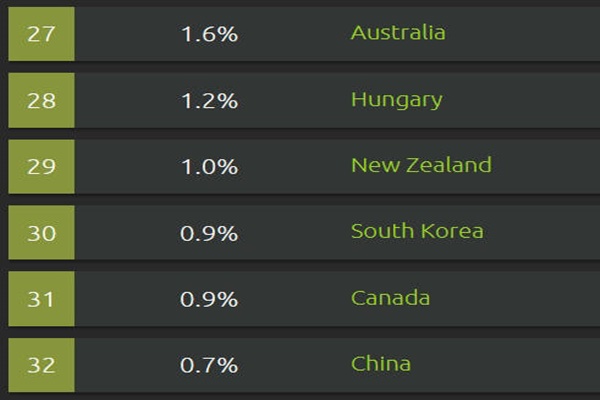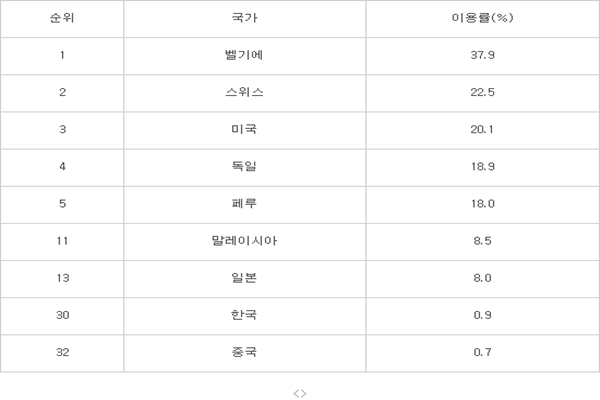Although South Korea is finally within 30th globally globally in ranking of utilization of unlimited internet protocol version (IPv6), its actual utilization percentage is not even 1%.
Even though government and industry are working hard to expand IPv6, they are not seeing any definite effects of their efforts. Industry is pointing out that it will be difficult to expand IPv6 if contents suppliers, which are important for services, are not participating in their efforts.
According to a business specializing in network called Akamai, percentage of South Korea’s utilization of IPv6 is 0.9% that lists them at 30th place globally. Compared to last April (0.6%), its percentage increased 0.3% and its rank went up 3 steps. However it is still showing low utilization as its percentage is not even 1%. According to Cisco’s investigation, number of users is about 555,000 people. Supposed that there are about 40 million people who use internet, only small amount of people are still using IPv6.
Although South Korea surpassed China (0.7%) and Bhutan (0.5%) that it trailed in last April, it is still showing absurdly low percentage of utilization compared to major leading countries such as Belgium (37.9%), Switzerland (22.5%), U.S. (20.1%), and others. Even South East Asian countries such as Malaysia (8.5%) and Japan (8.0%) are far ahead of South Korea.
IPv6, which can make almost unlimited internet protocols, is an internet protocol system that was established to replace IPv4 that is being depleted. It is an important element for IoT time where one thing uses one internet protocol.

Internet Corporation for Assigned Names and Numbers (ICANN) already announced depletion of IPv4 4 years ago. To overcome this problem, South Korea uses transaction of current protocols, floating IPs and others instead of assignment of new internet protocols. However there are still phenomena of internet protocol depletion in many countries.
There are difficulties in releasing new web services if there is lack of internet protocols. There are also many limitations due to not receiving protocol allocations, and quality of customer services also declines. Lastly growth of corresponding industries is also not possible during IoT time.
Preparation of South Korea for IPv6 is very high and this indicates that South Korea is ready to use services right away if it has contents. Compared to end of last year’s criteria, it was investigated that 94.7% of backbone network and 68.9% of member network are ready to use it.
On the other hand, medium and small-sized internet service supplies and contents supplies are hesitant about changing to IPv6 because they think that it will not bring profits immediately to corresponding businesses. This means that they do not feel the need to change it, but specialists in this industry think that it will be too late for them when they actually face the challenge of lack of internet protocols.
Recognizing seriousness of this problem, government discussed about continuous cooperation with industries in last March as a way to relieve concerns about ICT policies. KT and Naver are pushing for commercialization of IPv6 by end of this year, and this will have huge impact on utilization because they are the biggest wired-communication business and portal business respectively.
“Even if large internet business and communication business are preparing for IPv6, it is useless if contents businesses, which send this to customers, are not participating in their preparation. We definitely need government’s supporting measure that can lead participations from medium and small-sized internet service businesses and contents businesses.
Staff Reporter An, Hochun | hcan@etnews.com
